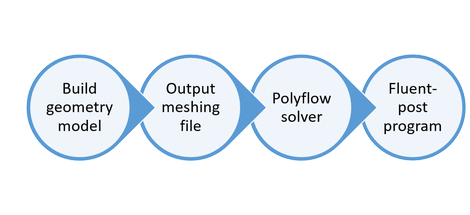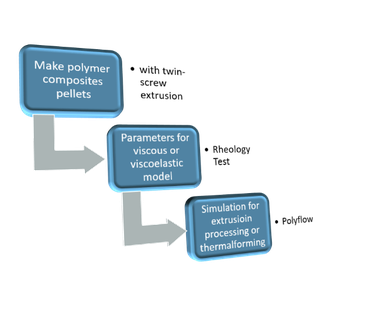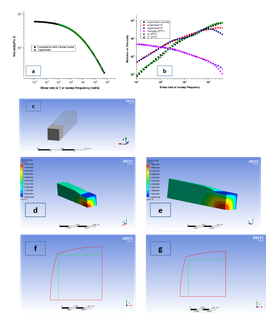Compohex - Simulations
Composite Heat Exchangers (COMPOHEX) – partim simulation
What is it about?
As a member of Composite Heat Exchangers (COMPOHEX) project, the aim of the project is to make polymer as a substitute for traditional materials for heat exchanger because of its excellent corrosion and light weight. In most cases, the low thermal conductivitives (0.2-0.5 W/Mk) of polymer materials (like PP, HDPE, PVDF and epoxy, et.al.) cannot achieve the requirements of heat conducting in heat exchangers. The common solution to that issue most likely is to add thermal conductive fillers (like graphite, BN and Carbon fibers, et.al.) to polymer matrix to increase its thermal conductivity. The normal processing method for producing thermal conductive polymer composites are extrusion and injection moulding. Fillers’ orientation in the flow direction will happen in most cases either with extrusion method or injection moulding method. Therefore, apparently the through-plane thermal conductivity of polymer composite sheet will be hard to increase. Controlling the fillers’ dispersion in polymer matrix, in other words, decreasing filler’s orientation in flow direction and increasing the random array of fillers, could be an interesting research topic to investigate.
Objective of the research
Computational fluid dynamics (CFD) is actively used to investigate the flow processing in extruders. Polyflow, as a commercial CFD software package, is particularly widely used to simulate the flow behaviors of viscoelastic fluid such as die swell and wall slip, et.al., in processing development, which could effectively decrease the time and money in the development of final products. There are a lot of factors influencing the fillers’ dispersion in polymer composites like flow volumetric rate, screw rotating rate and the smooth degree of extrusion and die walls’ surface (wall slip), et.al. Polyflow with excellent functions could be a powerful tool to simulate the influence of processing parameters on the fillers’ dispersion state in matrix, showing a very high potential in process optimization for twin or single-screw extrusion.
Fig.2 Simple workflow scheme
An example for the simulation within Polyflow software
Fig. 3 simple simulation result of die swell when PP is used as a flow fluid, (a) shows the experiment data of viscosity and the fitted data calculated by the Bird-Carreau model; (b) shows the experiment data of viscosity, storage modulus and loss modulus, and the corresponding data fitted by PTT viscoelastic model; (c) shows a simple 3D geometry model of a rectangle die; (d) and (e) show the velocity profile along the flow direction obtained from the Bird-Carreau model and PTT model, respectively; (f) and (g) show the comparison between the cross sections of die and extrudate by Bird-Carreau model and PTT model, respectively.
Type of funding and duration
CSC granted scholarship, 2016-2020
Contact
Coordinator: Prof. Ludwig Cardon

